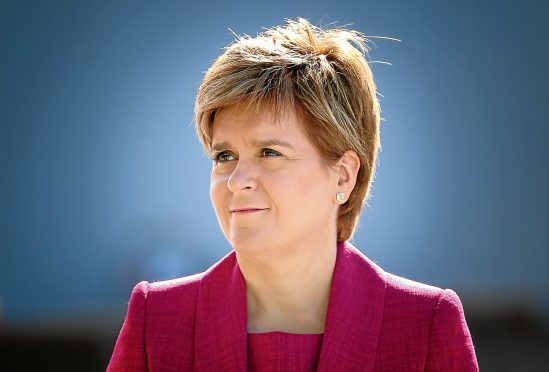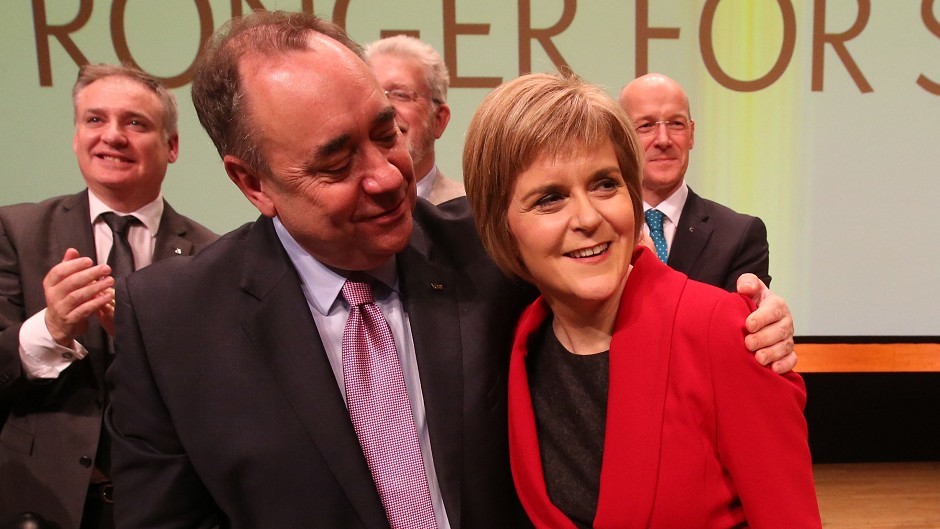Amid the cacophony of Brexit chaos and the pitiful bleating of Theresa May’s struggle for survival, the unmistakable sound of indyref2 sabre-rattling can be heard against the din.
It is a noise that is all too familiar to followers of Scottish politics. It comes in the form of rhetorical flourishes that give the impression of action on a second Scottish independence referendum while delivering little in the way of actual progress.
Last week there were at least two pronouncements from Nicola Sturgeon that she will make an announcement on the timing of another independence referendum “within weeks”, regardless of how things stand in the Brexit process.
These first ministerial pro-indy comments gathered plenty of headlines, but if recent history is anything to go by, this keenly awaited event will conform to a familiar pattern.
Given the complexity of the situation around EU Withdrawal, the forthcoming announcement is most unlikely to be anything more than another “wait and see” declaration which provides nothing tangible in terms of indyref2.
>> Keep up to date with the latest news with The P&J newsletter
This fudged approach has been a feature of the vast majority of post-Brexit Sturgeon statements on independence.
Typically Ms Sturgeon tries to strike a balance between giving grassroots independence supporters enough pro-indy rhetoric to keep them satisfied while hedging her bets on how and when another vote should take place.
This time, her statement – which is expected before the summer recess in July – may well have the added complication of a so-called People’s Vote on Brexit – a proposal supported by the SNP even though it has the potential to kick indyref2 further into the long grass.
Therefore, there is all the more reason to suspect that the “wait and see” formula will be given another outing.
That cautious approach has been in evidence ever since her ill-judged statement in the immediate aftermath of the Brexit vote backfired so spectacularly.
Back then Ms Sturgeon put Scottish independence back on the table with a bullish statement. But her strategy to link Brexit with independence went down badly beyond her core support and was seen as the main reason for the SNP losing one third of its seats in the 2017 snap election. Public opinion forced her to back track on her independence commitment, delaying firm commitments until the Brexit dust has settled and resorting to a far more cautious strategy.
The problem for the SNP leader is that the party rank and file are growing increasingly impatient. And her difficulties are compounded by the collapse of the Scottish Government’s investigation into sexual harassment complaints made against Alex Salmond.
The questions raised about her own conduct during “secret” meetings with Mr Salmond after the complaints were made have created the most serious crisis of her leadership.
Ms Sturgeon will be hoping that the two investigations which are to be held into the affair will draw a line under the controversy for the time being at least. That, however, is a forlorn hope given the drip-drip nature of revelations so far and the claims and counterclaims emerging from the Salmond and Sturgeon camps.
The party unity which was once such a feature of the SNP machine is now a distant memory. Allies of Mr Salmond are briefing against Ms Sturgeon and her government.
And in years gone by it would have been unthinkable for Ms Sturgeon’s spokesman to accuse Mr Salmond’s supporters of attempting to “smear” the first minister. Likewise, it would have been inconceivable that Ms Sturgeon’s spokesman to accuse Mr Salmond’s supporters of pursuing a “vendetta” against the first minister’s chief-of-staff Liz Lloyd.
But all these things have happened in the last week or so.
Never before can the modern SNP have been split into two such bitterly opposed camps. On the one hand there are the Sturgeon loyalists, who despair at the impact the controversy over Mr Salmond is having on the party.
They tend to sympathise with the independence referendum dilemma facing the first minister and accept that Ms Sturgeon has to box cleverly in order to achieve the SNP’s goal.
On the other hand are the Salmondistas, many of whom believe Mr Salmond has been unfairly treated and are chomping at the bit for indyref2.
This faction is growing increasingly frustrated with the lack of action, which contrasts so vividly with the with the firebrand enthusiasm so many brought to the party in the aftermath of the 2014 referendum. The party is not so much split, but rent asunder.
The massive challenge for Ms Sturgeon is now twofold. She has the long-standing task of persuading the public at large that independence offers an escape from a chaotic Brexit. This includes the substantial undertaking of persuading those who believe that Brexit illustrates just how difficult splitting up a political Union can be.
These are voters who believe that the difficulties of breaking away from a 40-year-old political arrangement simply shows just how tricky it would be to sever a Union that has been in place since 1707.
The second part of the challenge is closer to home. How does she bridge the gaping chasm that has opened up in her own party? Perhaps common cause in the form of another independence vote would heal some of the wounds and satisfy those, who like Mr Salmond, believes Brexit offers an unrivalled opportunity for independence. That may be so. But the thorny question of indyef2 timing remains. Right now, the first minister does not have her troubles to seek.


